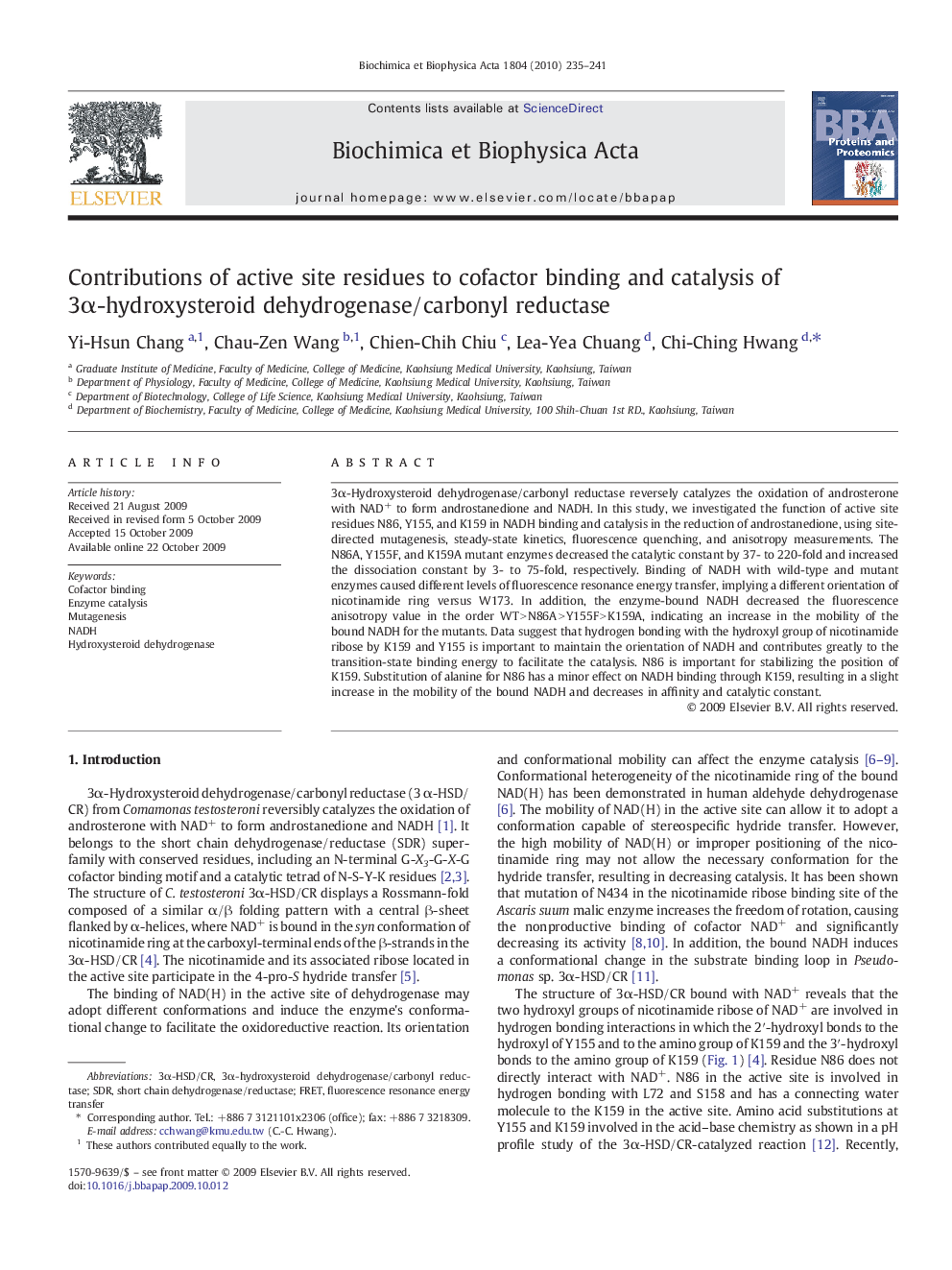| Article ID | Journal | Published Year | Pages | File Type |
|---|---|---|---|---|
| 10536980 | Biochimica et Biophysica Acta (BBA) - Proteins and Proteomics | 2010 | 7 Pages |
Abstract
3α-Hydroxysteroid dehydrogenase/carbonyl reductase reversely catalyzes the oxidation of androsterone with NAD+ to form androstanedione and NADH. In this study, we investigated the function of active site residues N86, Y155, and K159 in NADH binding and catalysis in the reduction of androstanedione, using site-directed mutagenesis, steady-state kinetics, fluorescence quenching, and anisotropy measurements. The N86A, Y155F, and K159A mutant enzymes decreased the catalytic constant by 37- to 220-fold and increased the dissociation constant by 3- to 75-fold, respectively. Binding of NADH with wild-type and mutant enzymes caused different levels of fluorescence resonance energy transfer, implying a different orientation of nicotinamide ring versus W173. In addition, the enzyme-bound NADH decreased the fluorescence anisotropy value in the order WT > N86A > Y155F > K159A, indicating an increase in the mobility of the bound NADH for the mutants. Data suggest that hydrogen bonding with the hydroxyl group of nicotinamide ribose by K159 and Y155 is important to maintain the orientation of NADH and contributes greatly to the transition-state binding energy to facilitate the catalysis. N86 is important for stabilizing the position of K159. Substitution of alanine for N86 has a minor effect on NADH binding through K159, resulting in a slight increase in the mobility of the bound NADH and decreases in affinity and catalytic constant.
Keywords
Related Topics
Physical Sciences and Engineering
Chemistry
Analytical Chemistry
Authors
Yi-Hsun Chang, Chau-Zen Wang, Chien-Chih Chiu, Lea-Yea Chuang, Chi-Ching Hwang,
